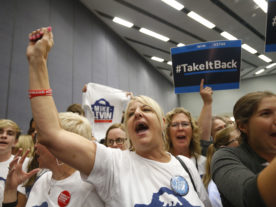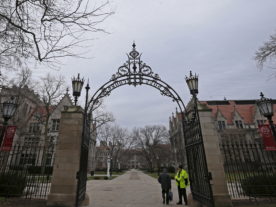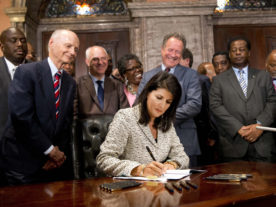For the first time ever, 90 percent of Americans over the age of 25 have finished high school, and more than one-third of Americans over the age of 25 has a college degree or higher.
That’s a large increase from 1940, when less than one-quarter of Americans had completed at least four years of high school, and just 4.6 percent had earned a bachelor’s degree or higher, according to the U.S. Census Bureau.
Foreign-born Americans accounted for 54 percent of people who did not complete high school in 2017. The numbers are even higher among Hispanics, where 76 percent of those born abroad do not have a high school diploma.

Even though higher percentages of foreign-born people from all race and ethnic groups have not finished high school, nearly as many have a college education alongside people born in the United States.
Thirty-four percent of people born in America hold a four-year college degree, while that number stands at 33 percent for those born in other countries.
The value of a high school degree has changed dramatically since the 1940s. Today, a high school education is often required for workers in the modern U.S. job market.

The U.S. Census Bureau data found that the 2007 to 2009 recession prompted more Americans to go to college.
During the recession, there was a 33 percent increase in enrollment in two-year colleges.
“During economic hard times, what we tend to see is more people coming back to school to be retrained for either new careers or for enhancing their existing careers in lieu of being employed,” says James Sawyer, president of Macomb Community College in Warren, Michigan, which serves about 48,000 students each year.
Twenty-nine percent of all students nationwide were enrolled in two-year colleges in 2010, but that number had dropped to 25 percent in 2015.
As the labor market improved, fewer Americans left their positions to go to college; however, the number of students enrolled in two-year colleges was still 10 percent higher in 2015 than in 2006.
“We definitely spiked in the 2009-2010 time frame and that was a direct result of the recession,” Sawyer says. “Conversely now, and this is true of community colleges in general, our enrollments are declining as we go forward because the economy is doing so well.”
The data shows that it pays to go to college. In 2016, high school graduates made an average salary of $35,615. Those with a four-year college degree earned $65,482, while people with advanced degrees took home an average of $92,525.
There is still a significant gender gap. Men with a college degree earned an average of $79,927 in 2016, while women with the same level of education were paid an average of $50,856.

























Waw it good for USA the edcatuin is the most important thing in the world.
It’s all good and dandy but when you think about who we have as president whose followers are majority white, and in this graph whites are touted as most educated that should say something about it’s accuracy. When an average American can not decipher between Iran and Iraq and intentionally or unintentionally avoid reading and understanding the dark side of American history so it won’t be repeated again. I say a scholar education is a precursor to a human beings growth so long as man implicates it in life using common sense .